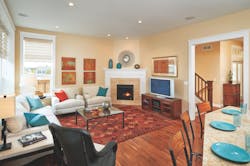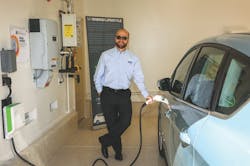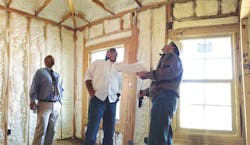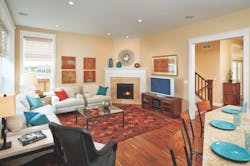Zero Energy Ready Homes (ZERHs) are key to the future of the housing industry. This type of home, which outperforms standard buildings and delivers the opportunity for ultra-low or nonexistent energy bills, is also an exciting growth industry. While a relatively small percentage of home builders are constructing them today, their popularity will likely keep rising as their success becomes well known. Everyone involved in expanding the number of ZERHs, from builders to buyers, are helping transform the housing market, and ensuring that more American homebuyers have easy access to these self-contained, renewable energy systems that offset most or all of the home’s annual energy use.
The U.S. Department of Energy (DOE) Challenge Home program (formerly Builders Challenge) is at the forefront of this transformation, recognizing hundreds of leading residential builders for their achievements in energy efficiency—resulting in over 14,000 energy-efficient homes and millions of dollars in energy savings. Qualified Challenge Home builders, including some of the leading performers from the 2013 DOE Housing Innovation Awards, are among the top 1 percent of builders in the U.S. and have found ways to integrate home performance into their production processes in a variety of climate zones across the country.
The builders featured in this article won this distinguished award, and are unique because they represent large builder businesses that recognize the importance of offering high-performance homes as a critical part of their product lines.
KB Home
KB Home’s first Challenge Home produces enough power to meet all the home’s electricity needs but also has some left over to power an electric car charging station in the garage.
KB Home’s Haciendas at Rancho Santalina ZeroHouse 2.0 project is located in San Marcos, Calif., in climate zone 3. This 4-bedroom, 2.5-bathroom model home was completed in March 2013 and has 2,778 sq. ft. of conditioned space.
Performance Data:
• HERS Index without solar PV: 52
• HERS Index with solar PV: -4
• Projected annual utility costs: without solar $1,601; with solar -$182
• Projected annual energy-cost savings (compared to a home built to the 2006 IECC): without solar $2,000
• Builder’s added cost over standard construction: with solar $50,000
• Annual energy savings: 13,751 kWh, 192 Therms
Mandalay Homes
The underside of the roof in this Mandalay Homes’ residence is covered with 5.5 inches (R-20) of closed-cell spray foam, which shields HVAC equipment from the extreme heat of a Phoenix summer.
Mandalay Homes’ Gordon Estates project is located in Phoenix, Ariz., in climate zone 4. This 4-bedroom, 2.5-bathroom model home was completed in June 2013 and has 1,700 sq. ft. of conditioned space.
Performance Data:
• HERS Index without solar PV: 58
• HERS Index with solar PV: 38
• Projected annual utility costs: without solar $1,179; with solar $905
• Projected annual energy-cost savings (compared to a home built to the 2006 IECC): without solar $583; with solar $857
• PV production revenue: $274
• Builder’s added first costs (compared to a home built to the 2006 IECC): $7,650
• Annual energy savings: without solar 8,848 kWhs or 30.2 MMBtus; with solar 10,135 kWhs or 40.1 MMBtus
New Town Builders
New Town Builders used the house-as-a-system approach, traditional materials and building practices, and Energy Star Version 3.0 to reach a HERS 41 score without solar and HERS 3 with solar.
New Town Builders’ Hale Plan project is located in Denver, Colo., in climate zone 5. This 3-bedroom, 2.5-bath home was completed in May 2013 and has 3,560 sq. ft. of conditioned space (with basement).
Performance Data:
• HERS Index without solar PV: 41
• HERS Index with solar PV: 3
• Projected annual utility costs: without solar $1,146; with solar -$89
• Projected annual energy cost savings (compared to a house built to the 2006 IECC): without solar $1,812
• Annual energy savings: 18,753 kWh, 740 therms
The builders highlighted above are only a few of the top performing builders in the nation. Builders committed to achieving the high performance levels of the DOE Challenge Home program have recognized the need to differentiate themselves from their competitors, reduce risk and callbacks, and increase profit margins. To check out more builders who have taken the challenge and their projects, look for DOE Challenge Home profiles in the Building America Solution Center, located at basc.pnnl.gov/case-studies.
As Chief Architect for the DOE’s Building Technologies Program, Sam’s primary role is to help deploy energy-efficiency research for new and existing homes, such as the Building America Solution Center (BASC), a new resource that makes the latest innovations and best practices accessible to residential new-construction stakeholders. To read the complete case studies, visit http://www.energy.gov/eere/buildings/housing-innovation-awards.
Sign-up for Pro Builder Newsletters
Get all of the latest news and updates.



